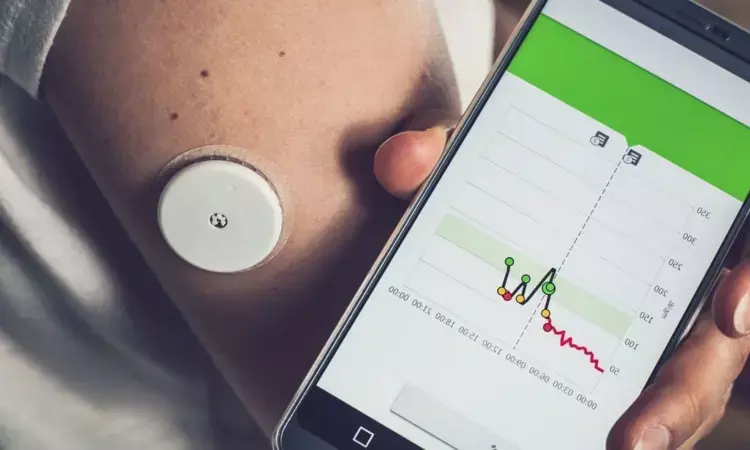- Home
- Medical news & Guidelines
- Anesthesiology
- Cardiology and CTVS
- Critical Care
- Dentistry
- Dermatology
- Diabetes and Endocrinology
- ENT
- Gastroenterology
- Medicine
- Nephrology
- Neurology
- Obstretics-Gynaecology
- Oncology
- Ophthalmology
- Orthopaedics
- Pediatrics-Neonatology
- Psychiatry
- Pulmonology
- Radiology
- Surgery
- Urology
- Laboratory Medicine
- Diet
- Nursing
- Paramedical
- Physiotherapy
- Health news
- Fact Check
- Bone Health Fact Check
- Brain Health Fact Check
- Cancer Related Fact Check
- Child Care Fact Check
- Dental and oral health fact check
- Diabetes and metabolic health fact check
- Diet and Nutrition Fact Check
- Eye and ENT Care Fact Check
- Fitness fact check
- Gut health fact check
- Heart health fact check
- Kidney health fact check
- Medical education fact check
- Men's health fact check
- Respiratory fact check
- Skin and hair care fact check
- Vaccine and Immunization fact check
- Women's health fact check
- AYUSH
- State News
- Andaman and Nicobar Islands
- Andhra Pradesh
- Arunachal Pradesh
- Assam
- Bihar
- Chandigarh
- Chattisgarh
- Dadra and Nagar Haveli
- Daman and Diu
- Delhi
- Goa
- Gujarat
- Haryana
- Himachal Pradesh
- Jammu & Kashmir
- Jharkhand
- Karnataka
- Kerala
- Ladakh
- Lakshadweep
- Madhya Pradesh
- Maharashtra
- Manipur
- Meghalaya
- Mizoram
- Nagaland
- Odisha
- Puducherry
- Punjab
- Rajasthan
- Sikkim
- Tamil Nadu
- Telangana
- Tripura
- Uttar Pradesh
- Uttrakhand
- West Bengal
- Medical Education
- Industry
CGM Metrics Strongly Predict 5-Year Mortality Risk in Diabetes, Study Shows

USA: A new long-term analysis published in Diabetes Care has highlighted the potential of continuous glucose monitoring (CGM) metrics to predict the risk of death among individuals with type 1 or type 2 diabetes. The study, led by Tomoki Okuno from the Department of Biostatistics at the University of California, Los Angeles, in collaboration with colleagues, suggests that CGM data may provide a more nuanced assessment of risk than traditional HbA1c measurements.
The research examined 2,752 adults aged 21 years or older with diabetes, 65% of whom had type 2 diabetes, from the Veterans Affairs Healthcare System. All participants had used Dexcom CGM devices between 2015 and 2020 and had at least 10 days of CGM data within landmark periods of 14 days, three months, or six months. These glucose readings were linked with electronic health records, and participants were followed for up to five years from the start of CGM use to assess all-cause mortality.
At the time of CGM initiation, the average age of participants was 64 years, and the median duration of CGM use was almost three years. Over the follow-up period, 407 participants died. The analysis evaluated multiple CGM-derived metrics—mean glucose (MG), time in range (TIR), time above range (TAR), coefficient of variation (CV), and glycemic risk index (GRI)—using multivariable Cox models adjusted for known mortality risk factors.
The study led to the following findings:
- Higher mean glucose (MG), time above range (TAR), coefficient of variation (CV), and glycemic risk index (GRI) during the six-month observation period were significantly associated with an increased risk of death over the following five years.
- Spending more time in the target glucose range (TIR) was linked to a lower mortality risk.
- Hazard ratios were MG (1.18), TAR (1.20), CV (1.18), GRI (1.23), and TIR (0.83), all with P-values ≤ 0.01.
- These associations remained significant even after adjusting for HbA1c levels recorded during the same period.
- The link between glucose variability (CV) and mortality persisted independently of other CGM metrics, with the strongest association seen in individuals with lower HbA1c levels.
- Similar associations were observed with shorter CGM observation periods, supporting the consistency of the results.
The researchers noted that while HbA1c remains a cornerstone in diabetes management, it provides an average glucose estimate and does not reflect fluctuations or the duration of hypo- and hyperglycemic episodes. CGM-derived data, on the other hand, offer a more dynamic picture of glycemic control, potentially enabling clinicians to identify high-risk individuals who might be missed using HbA1c alone.
Overall, the study emphasizes the importance of incorporating CGM metrics—particularly mean glucose, time in range, and measures of glucose variability—into clinical practice for long-term risk assessment. The authors suggest that this approach could pave the way for more targeted interventions aimed at reducing mortality in people with diabetes.
Reference:
Tomoki Okuno, Sharon A. Macwan, Gregory J. Norman, Donald R. Miller, Peter D. Reaven, Jin J. Zhou; Continuous Glucose Monitoring Metrics Predict All-Cause Mortality in Diabetes: A Real-world Long-term Study. Diabetes Care 2025; dc250716. https://doi.org/10.2337/dc25-0716
Dr Kamal Kant Kohli-MBBS, DTCD- a chest specialist with more than 30 years of practice and a flair for writing clinical articles, Dr Kamal Kant Kohli joined Medical Dialogues as a Chief Editor of Medical News. Besides writing articles, as an editor, he proofreads and verifies all the medical content published on Medical Dialogues including those coming from journals, studies,medical conferences,guidelines etc. Email: drkohli@medicaldialogues.in. Contact no. 011-43720751


